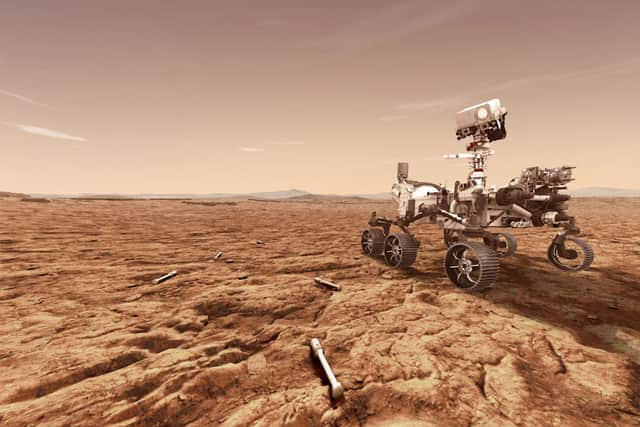AI: scientists develop a test that can detect alien life with 90% certainty
and live on Freeview channel 276
Scientists have developed a test that can confirm alien life with 90% accuracy to determine if a sample is biological or non-biological.
The simple and reliable test could help radically change how researchers search for life on other planets.
Advertisement
Hide AdAdvertisement
Hide AdThis test has been dubbed the "holy grail" of astrobiology, and it can be used on already existing examples - such as the ones gathered from Mars.


Using the samples collected already by the Mars Curiosity rover’s Sample Analysis at Mars (Sam) instrument, the rover can analyse the samples, and the data can be used in the test.
The test can also be used on Earth, to unveil further secrets about our planet that can be found in rocks.
“The search for extraterrestrial life remains one of the most tantalizing endeavours in modern science,” said lead author Jim Cleaves of the Earth and Planets Laboratory, Carnegie Institution for Science, Washington, DC.
Advertisement
Hide AdAdvertisement
Hide Ad“The implications of this new research are many, but there are three big takeaways: First, at some deep level, biochemistry differs from abiotic organic chemistry; second, we can look at Mars and ancient Earth samples to tell if they were once alive; and third, it is likely this new method could distinguish alternative biospheres from those of Earth, with significant implications for future astrobiology missions.”
The test was built by giving an artificial intelligent system data about 134 known samples, with information about whether they are biotic or abiotic - meaning the technique does not look for specific molecules or compounds that suggests life.
To see if the test works, it was given new samples such as those from living things, remnants of ancient life and other abiotic samples that did not point to life, such as pure chemicals – and identified them with 90% accuracy.
The researchers hailed this as revolutionary as the new method works after the samples may have decayed and changed over time.
Advertisement
Hide AdAdvertisement
Hide Ad“This routine analytical method has the potential to revolutionize the search for extraterrestrial life and deepen our understanding of both the origin and chemistry of the earliest life on Earth,” said Robert Hazen, of the Carnegie Institution for Science, one of the leaders of the research. “It opens the way to using smart sensors on robotic spacecraft, landers and rovers to search for signs of life before the samples return to Earth.”
The study was published in the journal: Proceedings of the National Academy of Sciences.
Comment Guidelines
National World encourages reader discussion on our stories. User feedback, insights and back-and-forth exchanges add a rich layer of context to reporting. Please review our Community Guidelines before commenting.
